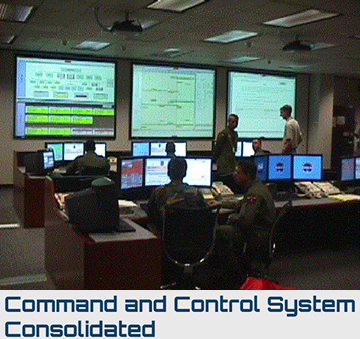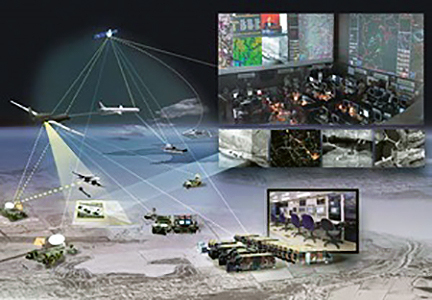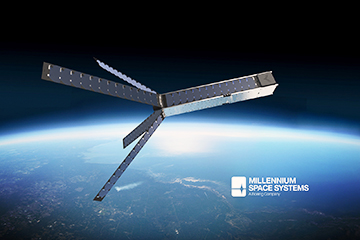
Kratos Defense & Security Solutions, Inc. (Nasdaq: KTOS) has commanded an on-orbit spacecraft using the U.S. Air Force’s Enterprise Ground Services (EGS) framework.

The CCS-C provided consolidated MILSATCOM tracking, telemetry and command capability for 14th Air Force / 50th Space Wing launch and early orbit, on-orbit and anomaly resolution operations.
Photo is courtesy of the U.S.A.F.
This demonstration directly follows on the heels of three successful pathfinder studies announced earlier by Kratos for migrating the Command and Control System – Consolidated (CCS-C) ground system to the EGS architecture. CCS-C provides consolidated MILSATCOM tracking, telemetry and command capability for 14th Air Force and the 50th Space Wing.
The Kratos demonstration supports the U.S. Air Force’s strategic approach to implementing a common, service-based satellite ground infrastructure that will evolve current satellite ground systems into a single platform. EGS is a critical enabling technology that is focused on a sustainable, resilient space architecture that can respond to emerging threats and protect space-based assets.

Kratos EGS software and services commanded an on-orbit spacecraft and demonstrated multiple capabilities supporting the EGS framework. These included the EGS service paradigm and dynamically allocating satellite ground resources and executing deployment automation with the ability to spin up new satellite command and control instances in less than 10 minutes.
Technology Readiness Level (TRL) is a method of estimating technology maturity of critical technology elements of a program during the acquisition process. Evidence of TRL 8 was proven in the following ways:
- Kratos Commercial Off-The-Shelf (COTS) software natively mapped into the EGS service paradigm.
- The deployment automation solution was shown to work on two different vendor technology stacks.
- Kratos EGS integration software completely decoupled each EGS service from all other services using the NASA Goddard GMSEC message bus.
- Kratos COTS software was utilized to demonstrate the implementation of EGS services including Telemetry and Command Processing, Automation, User Experience, Orchestration and a Range Interface.
TRL 8 readiness means that the actual system was completed and mission qualified through test and demonstration in an operational environment.

Artistic rendition of the Altair Pathfinder satellite. Image is courtesy of Millennium Space Systems.
The entire test and demonstration was accomplished working cooperatively with Millennium Space Systems, a Boeing company, and their on-orbit Pathfinder spacecraft, Swedish Space Corporation with their worldwide ground antenna network and the U.S. Air Force’s Space Management Battle Lab (SMBL) in Colorado Springs, Colorado.
Executive Comment
Larry Lind, VP of Kratos Federal Program, said these capabilities are critical to achieving a resilient EGS and the agility needed to survive the new realities of space. In the past, the demonstration of a new satellite ground command and control station has taken months and, in many cases, years to execute. The test and demonstration of this first live contact run out of the Space Mission Battle Lab was made possible in less than three weeks and its success validated TRL 8 readiness of Kratos EGS technology.

